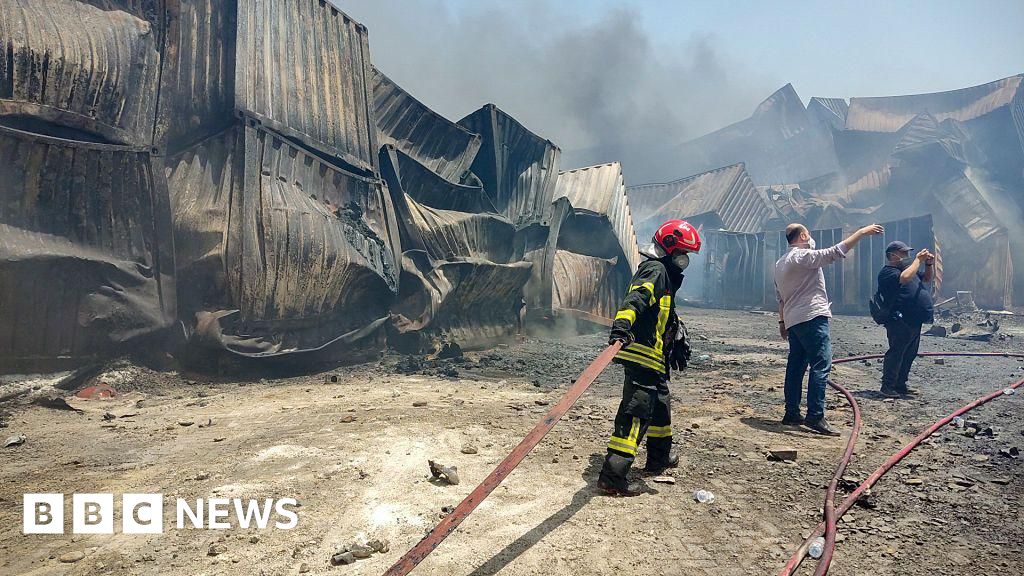ARTICLE AD BOX
By Jonathan Head
South East Asia correspondent
image sourceGetty Images
image captionKamala Harris hopes to reinforce US relations with allies in the region, Singapore and VietnamWhen US Vice President Kamala Harris arrives in Vietnam on the second part of her South East Asian tour, she can be grateful it is Hanoi she is flying into, not the larger commercial capital in the south, Ho Chi Minh City, formerly Saigon, which was re-named in 1975 after the first insurgent leader to force a humiliating American withdrawal.
For years afterwards, Vietnam evoked US failure and the futility of pouring money and lives into a war against an entrenched local insurgency.
The obvious parallels between Afghanistan today, and Vietnam then, are going to be awkward enough without actually being in the last city where the US had to lay on a last-minute, panicky evacuation.
Third time lucky?
Vice President Harris's visit is part of a diplomatic charm offensive by the Biden administration in South East Asia, a region it argues is crucial to the future prosperity and security of the United States. His is the third US administration to promise a renewed focus on this region.
President Obama's had his so-called 'pivot', which was supposed to redirect US diplomacy away from the Middle East towards the Asia-Pacific, and President Trump his 'Free and Open Indo-Pacific', intended to challenge China's expanding influence. Neither strategy went much beyond broad concepts, nor did they reverse the perception of declining US prestige here.
So, coming right after the embarrassing fiasco in Afghanistan, what hope has the vice-president of convincing her hosts in Singapore and Vietnam that President Biden will do any better?
There was some concern in this region about his apparent lack of interest in the first six months of his administration, when he did not call a single South East Asian leader, and seemed to focus more on rebuilding ties with Europe.
But in the past two months visits first by Deputy Secretary of State Wendy Sherman and then Defence Secretary Lloyd Austin have signalled the seriousness with which the US now takes this region.
"The way that the withdrawal from Afghanistan happened was very damaging to US credibility", says Professor Thitinan Pongsudhirak, director of the Institute of Security and International Studies at Chulalongkorn University in Bangkok.
"But in the long term, it depends what they do next. If they follow up on the Austin and Harris visits, stepping up vaccine diplomacy in this region, if they fully resource their Indo-Pacific strategy, this could be a more focused foreign policy for the Biden administration, away from the Middle East and the wars that cannot be won."
image sourceGetty Images
image captionUS vaccine diplomacy is already in full swing in the regionThe recent donation of 23 million doses of Covid vaccines has given the US image in South East Asia an unexpected lift, the perceived quality of its mRNA technology contrasting favourably with the less effective Chinese-made vaccines which have been deployed in large quantities.
Ms Harris will capitalise on that by proposing deeper healthcare and medical partnerships, and opening a first regional branch of the US Center for Disease Control in Hanoi.
She is also likely in Singapore to push the idea of a digital trade pact among several countries in the region, which could cover digital security and agreed standards in emerging technologies like AI and blockchain.
This has the advantage of re-engaging in Asia-Pacific trade networks, after the damage done by President Trump's abrupt withdrawal from the Trans-Pacific Partnership five years ago, and in areas where the US is competitive.
Challenge to China
It would aim to counter China's rapid advances in pushing its own telecoms and other advanced technology, the so-called 'digital silk road', which has seen, for example, Huawei's cutting-edge 5G infrastructure dominate in many countries.
President Biden is also pushing for changes to the way global supply chains are structured, to wean US companies off dependence on small numbers of specialised suppliers, many in China.
These issues will have much more appeal in South East Asia than the Trump administration's focus on projecting US military power in the South China Sea, and on escalating trade disputes with China. None of the countries in this region wants to be asked to choose between the US and China.
But that means enthusiasm even for these digital and supply chain initiatives will be limited if they are perceived as an attempt to confront China.
And the US will have to accept the reality that Asia-Pacific countries are already increasingly locked into tight trade relationships with China through the Regional Comprehensive Economic Partnership, signed in November last year.
Pressure on Myanmar crisis
President Biden has talked a lot about a diplomacy "rooted in America's most cherished democratic values".
Human rights, in which President Trump showed almost no interest, are on the list of topics to be discussed in Singapore and Vietnam.
But they are unlikely to feature as much as they did in the soaring speeches given by President Obama on his visits to this region. While his rhetoric about the arc of history bending towards freedom inspired younger audiences, it had little appeal to governments which have become more authoritarian and less tolerant of dissent.
Kamala Harris will certainly urge more decisive action by South East Asian countries to help restore democratic rule in Myanmar, but the US still says it accepts that Asean, the ten-member Association of South East Asian Nations, should lead efforts to solve the crisis there, and so far, Asean's diplomacy on Myanmar has moved at a glacial pace.
That acceptance of Asean's central role matters to governments here, unnerved by the increasingly shrill rivalry between the US and China, and the dominance of the so-called 'Quad', the new strategic partnership of the US, Australia, Japan and India, in US diplomacy.
"Asean's nightmare is to become irrelevant" says Thitinan Pongsudhirak, "and to lose its centrality in regional action for peace and security. It is very important for member states for the Quad not to be expanded, and for the Quad not to overshadow Asean."
Asean was founded in 1967 at the height of the Vietnam War, essentially as an arrangement by which the countries of the region could avoid the horrors they were witnessing next door in Indochina.
image sourceGetty Images
image captionIn the iconic photo from 1975, people are seen boarding a helicopter on the roof of the CIA station in SaigonThe US pull-out in 1975 left the region divided and vulnerable, with a debilitating conflict lingering another 15 years in Cambodia, which Asean worked hard to end.
The striking similarities between the falls of Saigon and Kabul, 46 years apart, cannot be avoided during Vice-President Harris's trip.
But she will doubtless point to the close economic and strategic ties today between her country and Vietnam, as evidence that the US can recover from the damage done by disastrous withdrawals.

 3 years ago
101
3 years ago
101








 English (US) ·
English (US) ·